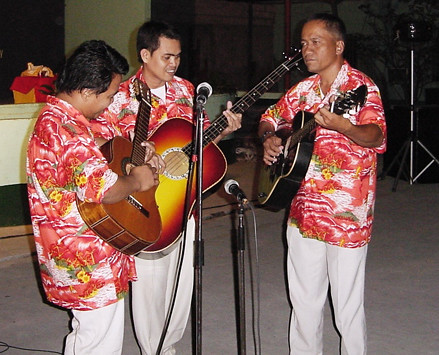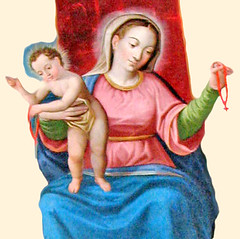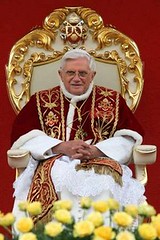Pilgrim Songs

These songs were taken from a manuscript called the 'Llibre Vermell' which is housed at the Monastery and Shrine of Montserrat near Barcelona. These songs were sung by the countless pilgrims who flocked to the shrine of Virgin Mary, hence she features prominently. There is another shrine in Spain which rivalled and indeed surpassed Montserrat, Santiago de Compostela. Compostela was the greatest pilgrimage site in Europe after Rome and pilgrims walked here from all over to honour St James the Greater, apostle and patron of Spain. Manuscripts of songs and dances played and sung by the pilgrims survive. There are Latin motets, marching songs, love songs and laments. Many tell of adventures along the road and the Virgin Mary's help. When one considers the 'Canterbury Tales' by Chaucer and these songs, one gets a very rich picture indeed of medieval pilgrimages. All of life with its joys, sorrow, expectations, hope, failures, love, fear, lust, greed, piety, humour; every human emotion and experience is caught up in these pilgrim songs and tales.
As such, a pilgrimage is a fitting image for the journey of life. What struck me as I listened to these exuberant and earnest pilgrim songs was the realization that many of them originated from the homeland and time of St Domingo de Guzman. It seems unlikely (although I can find no records) that someone like St Dominic who walked the length and breadth of Europe several times would not have walked to Montserrat and Santiago de Compostela too. I can imagine him, one of those many pilgrims on the roads to these shrines, singing these songs. It is well known that St Dominic often sang as he walked and I myself enjoy singing and making up tunes as I walk from place to place. It is said that St Dominic sang the 'Salve Regina' or the 'Veni Creator' as he walked. Perchance he also sang some of the 'Llibre Vermell' songs? I can see him singing (and even dancing along with) the joyous tune and words of this perhaps:
"Mariam Matrem Virginem attolite: Jhesum Christum extollite concerditer."
'Praise Mary, the Virgin Mother: praise Jesus Christ with all our hearts.'
Many of us still allow music to accompany us as we travel. The ubiquitous iPod, the radio in the car, the humble Walkman are all signs that, as for St Dominic, music is an integral part of our journey. However, there is the greater journey that we are all on, the journey of life that needs to be marked by music and song, dance and joy. I wonder, how many of us as we awake and begin our daily grind, as we travel from place to place actually sing along the way? It is one thing to listen to recorded music piped into our ears, but I rather suspect that for the medieval Spanish pilgrims and St Dominic, it is an altogether different thing to sing (even in your hearts!) as you tread the pilgrim way. The pilgrims sang from their hearts, songs and dances that expressed their hopes and fears and ultimately, their trust in the Virgin Mary; in divine providence.
When one listens to this music (and I would recommend the excellent recordings by Philip Pickett's New London Consort) and then sings them, one is caught up in the sheer humanity of the songs. They are full of humour, some are slightly risque, others far-fetched or even farsical and human weaknesses are exposed. But it does not stop there; this is no hedonistic revelry in human sinfulness! In the midst of all our human needs and ills, our delights and triumphs, there is the very real sense of faith and reliance on God's grace, as mediated through the Blessed Virgin. The songs, with their delightful tunes and jaunty rhythms are appealing and secular yet marked by Godly morals and dialectic. I see in them a beautiful integration of faith in everyday life and a very Dominican delight in human bodily-ness, avoiding any stain of Manichaeism. These are not the dour hymns or serious tunes one popularly associates with pilgrimages or even the Church and Christians(!) - it is joyful, lively and fun! What a marked contrast from the average parish singing at a Sunday Mass! The journey was, and indeed is, hard but that did not prevent the pilgrims from expressing their hope and confident joy that stemmed from their trust and faith in the Virgin or St James.

Interestingly, this faith and joy of the Spanish medieval pilgrim has spilled over into one of Spain's former dominions: the Philippines. That nation and its people truly embody the faith and hope combined with very earthy and fallen humanity that the pilgrim songs express. Here are a people who celebrate life frequently and flamboyantly, always with a song in their hearts and cheerful smiles, despite the sin, corruption and poverty that surrounds them. I surmise that this is only possible because the Filipino has such great faith in God and love for 'Mama Mary'. Perhaps we, the Pilgrim Church, need to re-discover that sense of joy and delight in our humanity, to learn to really celebrate life, and to express this in such a way that all people can see that we embrace all of life - the "joys and the hopes, the griefs and the anxieties of the men of this age" ('Gaudium et spes', 1) - and present all these to God in action, prayer and song, trusting in his aid, his grace, his mercy and above all, his redeeming love. "Thus the mission of the Church will show its religious, and by that very fact, its supremely human character" (GS, 11).
In the words of this 13th century Spanish pilgrim song:
"Now we languish, suffering our earthly torment. Yet I have seen many men and women who have been aided by Mary.Just as a star may direct the sailor, so St Mary is the pilgrim's sure guide."
Whether the destination is Montserrat, Compostela or Paradise, this will ever be the pilgrims'
song and prayer.







0 Comments:
Post a Comment
<< Home